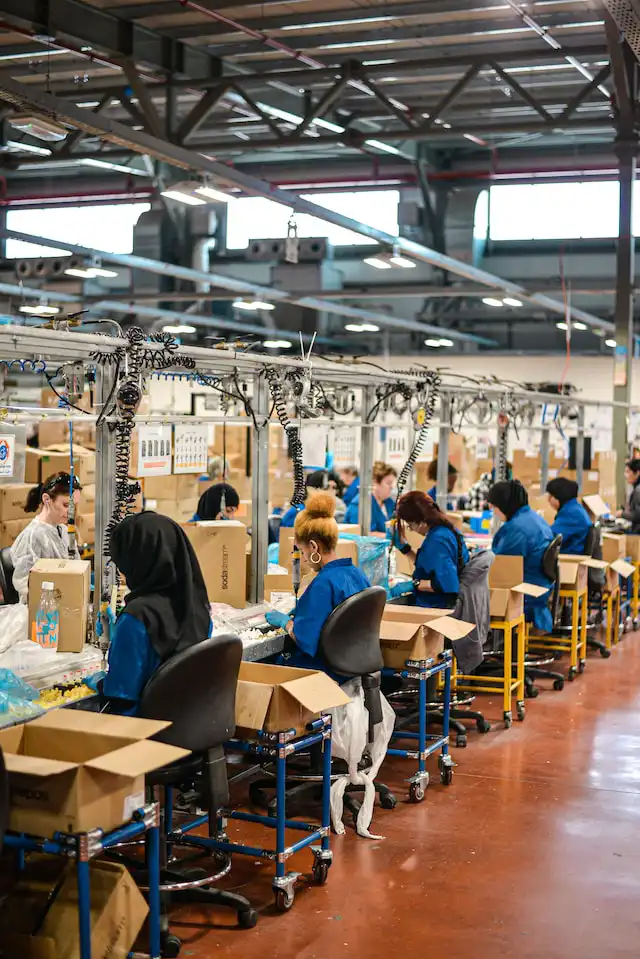
South Korea Warehouse Automation Market Outlook to 2027
Driven By increasing demand from end-user industries and factors such as increasing labor cost and labor shortage in the country
Region:Asia
Author(s):Shruti Singla
Product Code:KR1349
July 2023
73
About the Report
Market Overview:
According to Ken Research estimates, the Market Size of South Korea Warehousing has shown increasing trend from 2019 to 2022. South Korea's strategic location as a gateway between Europe, Asia, and Africa makes it an attractive hub for trade. The country has been actively promoting foreign trade and industrialization, attracting international companies to set up manufacturing facilities and distribution centers. This leads to an increased demand for warehousing services to support import, export, and local supply chains.

- Fueled with a high performing economy and one of the highest smartphones and internet users, digital revenue is expected to increase in coming years in the country
- Bolstering government push to become regional logistics epicenter would necessitate automation as the key parameter for a resilient supply chain, South Korea’s market to grow faster than global.
- There are large of domestic and international players operating in Warehouse Automation market with Daifuku being the largest player providing automation solutions in South Korea and globally

South Korea Warehouse Automation Market Analysis
- is the 6th largest market for e-commerce globally.
- The value of e-commerce sales in South Korea amounted to almost 210 trillion South Korean won in 2022. The popularity of online shopping via different e-commerce channels has continuously grown over the last years. This was especially true in the last year due to the effects of COVID-19, as the South Korean e-commerce market experienced an increase.
- This is rapidly generating need for large warehouse capacity with proper automation to tackle increasing logistics demands with increasing same day delivery demands.
- Hence, companies are continuously moving towards automating their warehouses in order to fulfill high volume of order efficiently with minimum possible errors.
Key Trends by Market Segment:
By Dedicated and Multi-Client Warehouse: 3PL Dedicated client market dominated with major share in 2022 and rest by multi-client warehouse. In terms of automation, the 3PL players are however moving to multi-client business as they are generally involved in shorter contracts with the clients hence to generate maximum profit in specific period of time market is inclining towards multi-client in coming years.

By New Installation Project VS Maintenance Services: In South Korea automation market, new installation project constitute lion share of major part in 2022 due to high demand from e-commerce and shortage of labor post COVID-19 and only 10% by maintenance services.
AS / RS technology holds minor share which are computer- and robot-aided systems that helps in retrieving items or store them in specific locations. It also helps in replacing large areas of shelving to save floor space, improve safety and increase productivity.

Competitive Landscape:
South Korea automation warehousing market is fairly fragmented with many organized and unorganized small. Some of the top players are Daifuku, SFA Corporation, Dematic, SSI Schafer, Hyundai Movex. Daifuku Korea Co Ltd. is the market leader and emerged as a star performer in past years. The company has risen to the top with its excellent product portfolio, skilled workforce and satisfactory installation and other services. The company is also working to improve profitability by offering differentiated services including after-sales services to mass market consumers. AutoStore System Ltd and new players like Hik Robotics are emerging as aspirants in the South Korea market. There are several major competitors like Dematic, SSI Schafer, Hyundai Movex etc. who offer more value to merchants and consumers. In addition to established companies, there are several Korean startups focused on warehouse automation. These startups are developing innovative solutions in areas like robotics, AI-powered inventory management, and warehouse optimization software. For example, Locus Robotics Korea, a subsidiary of a US-based robotics company, has entered the Korean market to offer collaborative mobile robots for warehouse fulfilment.
The South Korean government has recognized the importance of warehouse automation in enhancing the country's competitiveness. They have been supporting the adoption of automation technologies through various initiatives, including research and development funding, tax incentives, and regulatory reforms.
New players and technologies may emerge, and existing companies may continue to invest in advanced automation systems to gain a competitive edge. Therefore, it is essential to seek updated information from industry reports and news sources for the latest developments in the South Korean warehouse automation market.
Recent Developments:
- General merchandise, Retail, E-commerce etc. companies are readily adopting automation technologies to grow and expand their business in line with changing business environment.
- This will allow these companies to scale their business independently of issues including expensive labor and labor shortage.
- Further, labor shortage is expected in coming years due to fast ageing population of the country and low fertility rate.
- This leads to accelerate the demand for automation solutions to offset insufficient warehousing labor.
- Online food delivery is a growing market worldwide, with an estimated number of around 1.96 Bn people using such services in 2021. In South Korea, around 31.5% of households ordered food delivery that same year. This was often done for reasons of convenience and the possibility of limiting contact with others. Mobile and online ordering was the method of choicefor around 47 percent of consumers in South Korea.
- Increasing customers demand for same-day delivery mainly driven by pandemic which have led to manifold increase in online sales and bulk orders with same-day delivery preference such as grocery shopping. This will influence the companies to automate their warehouses to fulfill the rise in demand.
Future Outlook:
- Market Size of South Korea Warehousing automation is expected to show increasing trend from 2022 to 2027. The rapid shift of distribution of food products from traditional markets toward supermarkets and convenience stores is increasing the need for reefer trucks as major distributors hire 3PL for shipping via insulated trucks.
- There are important elements that have fueled the expansion of cold storage facilities and cold storage logistics in South Korea include the adoption of advanced technologies like automation and WMS (warehouse management systems) to improve functionality and efficiency. The growing logistics market of South Korea is simultaneously witnessing an increasing number of new players and existing players expanding their current level of operations.
- Collaborative mobile robots are revolutionizing the warehousing industry by enhancing picking accuracy and productivity. The integration of mobile robotics with automation tools allows for seamless order fulfilment and increased value for end users. Industry leaders like Mujin and Ocado Retail have showcased the potential of mobile robot technology in improving warehouse operations. As automation technology continues to advance, the adoption of collaborative mobile robots will play a crucial role in optimizing logistics processes and driving efficiency in the warehousing industry.
Scope of the Report
|
South Korea Warehousing Automation Market Segmentation |
|
|
By Type of Automotive Solution |
Basic Warehouse Automation Warehouse System Automation Mechanized Warehouse Automation & Advanced Warehouse Automation |
|
By End-User Industry |
General merchandise, Retail, Wholesale Apparel Grocery & e-Commerce Post & Parcel Pharma 3PL Others (Food & Beverage, Aerospace & defense, Oil & Gas etc.) |
|
By new installation project vs maintenance services market |
New Installation Project Maintenance Service |
|
By Dedicated and Multi Client Warehouse |
Dedicated Multi-Client |
|
By New Installation Project VS Maintenance Services Market |
New Installation Project Maintenance Service |
Products
Key Target Audience – Organizations and Entities Who Can Benefit by Subscribing This Report:
E-commerce Companies
Third-Party Logistic Providers
Potential Market Entrants
Freight Forwarding Companies
Warehousing Companies
Cold Storage Companies
Industry Associations
Consulting Agencies
Government Bodies & Regulating Authorities
Time Period Captured in the Report:
- Historical Period: 2016-2022
- Base Year: 2022
- Forecast Period: 2023-2027
Companies
Major Players Mentioned in the Report:
- Daifuku Korea Co Ltd
- SFA Corporation
- Dematic (Kion Group)
- SSI SCHAEFER Systems International Limited
- Hyundai Movex Co. Ltd
- SM Core Co Ltd
- Geekplus Technology Co.
- HAI robotics and LG CNS
- AutoStore System Ltd
- Hik Robotics
Table of Contents
1. Executive Summary
1.1 Executive Summary: South Korea Warehouse Automation Market
2. Country Overview
2.1 South Korea Country Overview
2.2 Internet Population and Smart Phone Penetration in South Korea
3. Market Overview
3.1 South Korea Warehouse Automation Market Overview
3.2 Global & Regional Warehouse Automation Market Overview
3.3 Overview and Genesis of Warehouse Automation Market in South Korea
3.4 Export and Import scenario of Warehouse Automation Machinery in South Korea
3.5 Ecosystem of Warehouse Automation Market in South Korea
4. Market Size
4.1 South Korea Warehouse Automation Market Size, 2016-2022
5. Market Segmentation
5.1 Market Segmentation By End-User Industry, 2022
5.2 Market Segmentation By 3PL Client and 3PL Dedicated Client by End-User Industry, 2022
5.3 Market Segmentation By New installation Project Vs Maintenance Services and By Technology, 2022
5.4 Market Segmentation By New Installation Projects by AGV and AMR Technology and By WMS Solutions, 2022
6. Industry Analysis
6.1 Growth Drivers of South Korea Warehouse Automation Industry
6.2 Trends and Developments in South Korea Warehouse Automation Market
6.3 Issues and Challenges in South Korea Warehouse Automation Market
6.4 SWOT Analysis of South Korea Warehouse Automation Market
6.5 Porter’s Five Force Analysis of South Korea Warehouse Automation Industry
6.6 Government Initiatives & Regulations
7. Competitive Landscape
7.1 PEAK Matrix Assessment of South Korea Warehouse Automation Market
7.2 Market Share of Major Warehouse Automation Players, 2022
7.3 Cross Comparison of Major Players in Warehouse Automation Market
7.4 Daifuku and Dematic Product Portfolio in South Korea Warehouse Automation Market
8. Snapshot of Warehousing Industry in South Korea
8.1 Snapshot on South Korea Warehouses
9. Future Outlook and Projections, 2022-2027
9.1 South Korea Warehouse Automation Future Market Size, 2022-2027
9.2 Segmentation based on End-User Industry, 2027
9.3 Segmentation by 3PL Client and 3PL Dedicated Client by End-User Industry, 2027
9.4 Segmentation By New installation Project Vs Maintenance Services and By Technology, 2027
9.5 Segmentation by New Installation Projects by AGV and AMR Technology and By WMS Solutions, 2027
9.6 Upcoming Socio Demographic Changes in South Korea
10. Analyst Recommendations
10.1 Analyst Recommendations for South Korea Warehouse Automation Market
11. Research Methodology
11.1 Market Definitions
11.2 Abbreviations Used
11.3 Market Sizing Approach- South Korea Warehouse Automation Market
11.4 Consolidated Research Approach
11.5 Sample Size Inclusion
11.6 Primary Research Approach
11.7 Future Forecasting Methodology and Research Limitations
Disclaimer Contact UsResearch Methodology
Step 1: Identifying Key Variables:
Ecosystem creation for all the major entities and referring to multiple secondary and proprietary databases to perform desk research around market to collate industry level information.
Step 2: Market Building:
Collating statistics on Warehousing over the years, penetration of marketplaces and service providers ratio to compute revenue generated for Warehousing services. We will also review service quality statistics to understand revenue generated which can ensure accuracy behind the data points shared.
Step 3: Validating and Finalizing:
Building market hypothesis and conducting CATIs with industry exerts belonging to different companies to validate statistics and seek operational and financial information from company representatives.
Step 4: Research output:
Our team will approach multiple Warehousing and warehousing services providing channels and understand nature of product segments and sales, consumer preference and other parameters, which will support us validate statistics derived through bottom to top approach from Warehousing and warehousing providers.
Frequently Asked Questions
01 What is the Future Growth Rate of the South Korea Warehousing Automation Market?
The South Korea Warehousing Automation Market is expected to witness a CAGR of ~14.7% between 2023-2027.
02 Which is the largest Segment in the South Korea Warehousing Automation Market?
The New installation project segment held the largest share of the South Korea Warehousing Automation Market in 2022.
03 Who are the Key Players in the South Korea Warehousing Automation Market?
LSC Logistics, Agility Logistics and Almajdouie Logistics are the major key players in South Korea Warehousing Automation Market.
04 What are the Key Factors Driving the South Korea Warehousing Automation Market?
The key factors driving the South Korea Automation market are increasing demand from end-user industries and factors such as increasing labor cost in the country.
Why Buy From Us?

What makes us stand out is that our consultants follows Robust, Refine and Result (RRR) methodology. i.e. Robust for clear definitions, approaches and sanity checking, Refine for differentiating respondents facts and opinions and Result for presenting data with story

We have set a benchmark in the industry by offering our clients with syndicated and customized market research reports featuring coverage of entire market as well as meticulous research and analyst insights.

While we don't replace traditional research, we flip the method upside down. Our dual approach of Top Bottom & Bottom Top ensures quality deliverable by not just verifying company fundamentals but also looking at the sector and macroeconomic factors.

With one step in the future, our research team constantly tries to show you the bigger picture. We help with some of the tough questions you may encounter along the way: How is the industry positioned? Best marketing channel? KPI's of competitors? By aligning every element, we help maximize success.

Our report gives you instant access to the answers and sources that other companies might choose to hide. We elaborate each steps of research methodology we have used and showcase you the sample size to earn your trust.

If you need any support, we are here! We pride ourselves on universe strength, data quality, and quick, friendly, and professional service.















